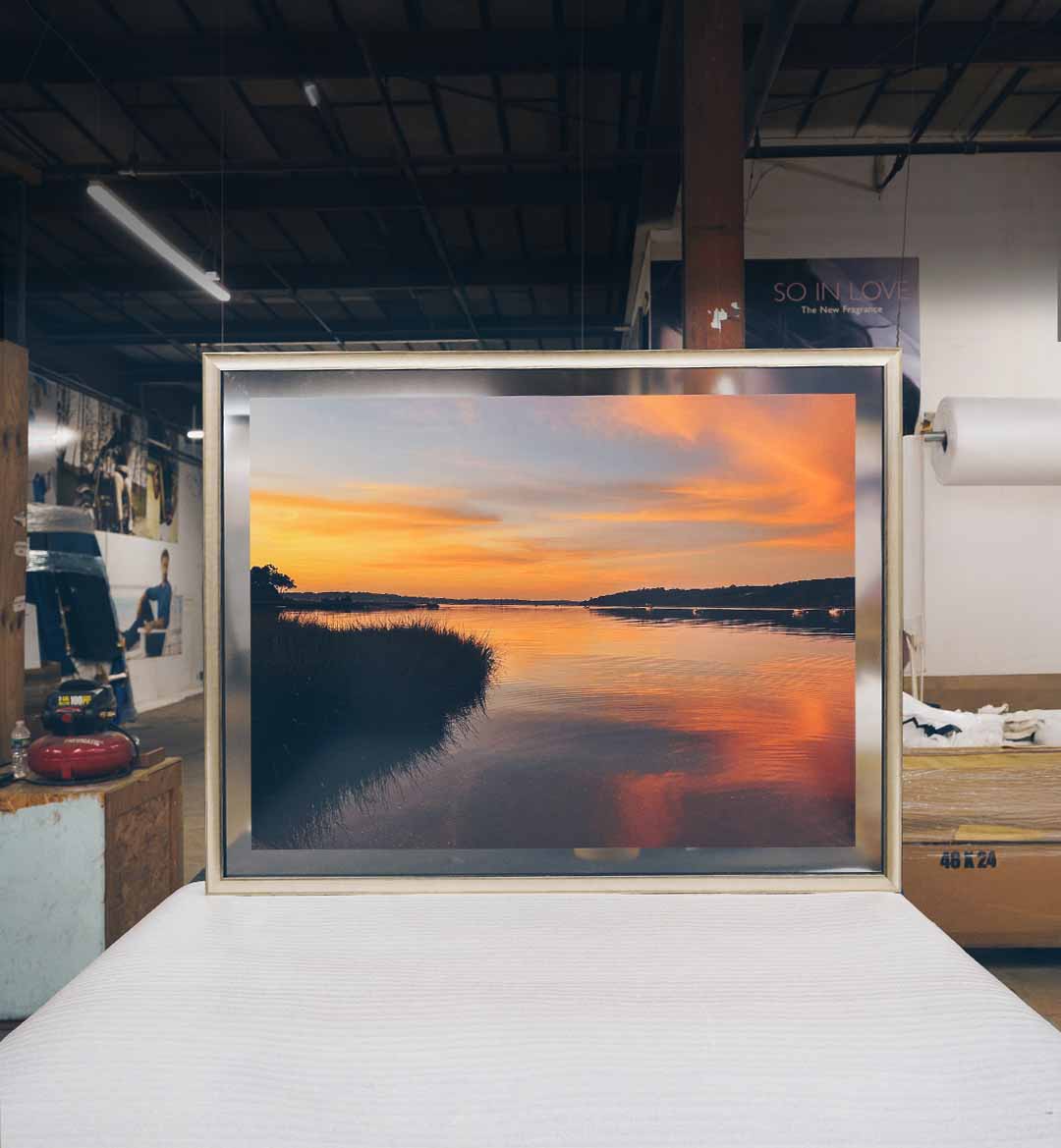When it comes to showcasing art or visual displays, mounting is more than a technical detail—it’s the foundation of presentation. Whether you're curating an exhibition, designing for a retail rollout, or installing visuals for a corporate client, the choice of mounting material directly impacts the look, feel, and longevity of your display.
In this guide, we’ll break down the most common mounting materials used in galleries and commercial environments—Sintra, DiBond, Gatorfoam, and Plexiglas—along with the pros and cons of each. We’ll also cover when to opt for mounting only versus full framing, and how to make your visuals last in high-traffic spaces.

Best for: Durable, cost-effective displays with a smooth finishSintra is a rigid PVC board often used in gallery and retail settings for its lightweight, smooth surface and durability. It’s moisture-resistant and ideal for both temporary exhibitions and long-term installations.
| Pros | Cons | Aesthetic |
| Lightweight, affordable, easy to cut. | Slightly flexible, can warp in extreme heat. | Smooth, matte finish with minimal edge profile. |
Best for: Sleek, modern presentation with top-tier durability
DiBond consists of two thin aluminum sheets with a solid polyethylene core. It’s highly stable, making it ideal for high-end gallery shows and corporate displays where longevity and rigidity matter.
| Pros | Cons | Aesthetic |
| Extremely durable, professional look, doesn’t warp. | More expensive, heavier than Sintra. | Clean, high-end finish with rigid edges. |
Best for: Lightweight mounting for temporary or transportable shows
Gatorfoam Boards is a foam board reinforced with a resin-coated surface. It’s often used for exhibitions requiring frequent transport or fast turnaround due to its light weight.
| Pros | Cons | Aesthetic |
| Very lightweight, easy to handle. | Susceptible to dents and damage. | Clean and smooth, but best suited for temporary use. |
Best for: High-gloss, photographic presentations with maximum visual impact
Plexi-mounted prints are face-mounted to clear acrylic for a gallery-worthy, frameless display. This method is ideal for photography or modern artwork that benefits from a sleek, glass-like finish.
| Pros | Cons | Aesthetic |
| High-end look, enhances color vibrancy. | Expensive, prone to scratching if mishandled. | Glossy, luxurious, ultra-modern. |

While traditional framing offers depth and texture, many modern exhibitions and visual displays benefit from clean, frameless mounting. Here's how to decide:
- Choose framing when: The piece is delicate, you want a classic presentation, or it needs extra protection. See Examples
- Choose mounting only when: You need a contemporary look, lightweight handling, or wall-to-wall visuals with minimal distraction. See Examples

For commercial environments like retail stores or corporate installations, durability is key. DiBond and Sintra are strong contenders here. DiBond’s resistance to warping and weathering makes it especially valuable in environments with changing temperatures or constant handling.
Plexiglas, while visually stunning, should be considered where staff or protective measures prevent surface damage. Gatorfoam, on the other hand, is best for short-term installs or behind-glass protection.
Tell us about your project.







